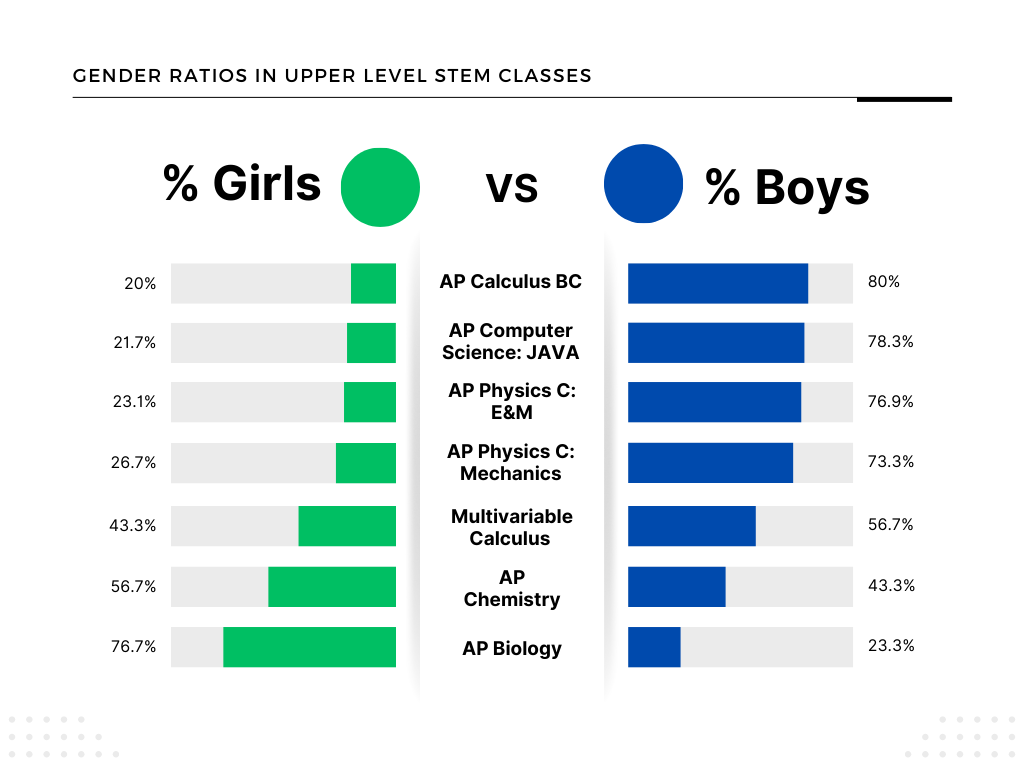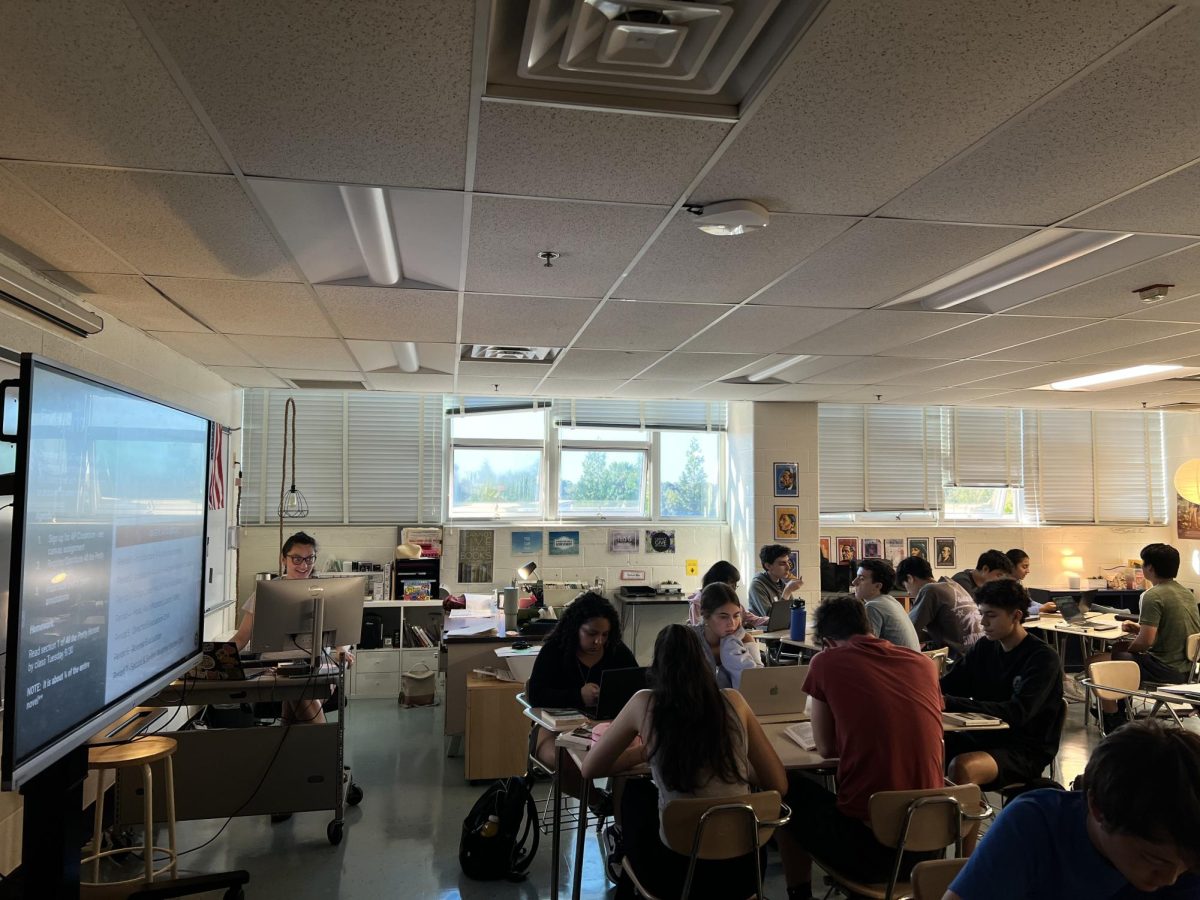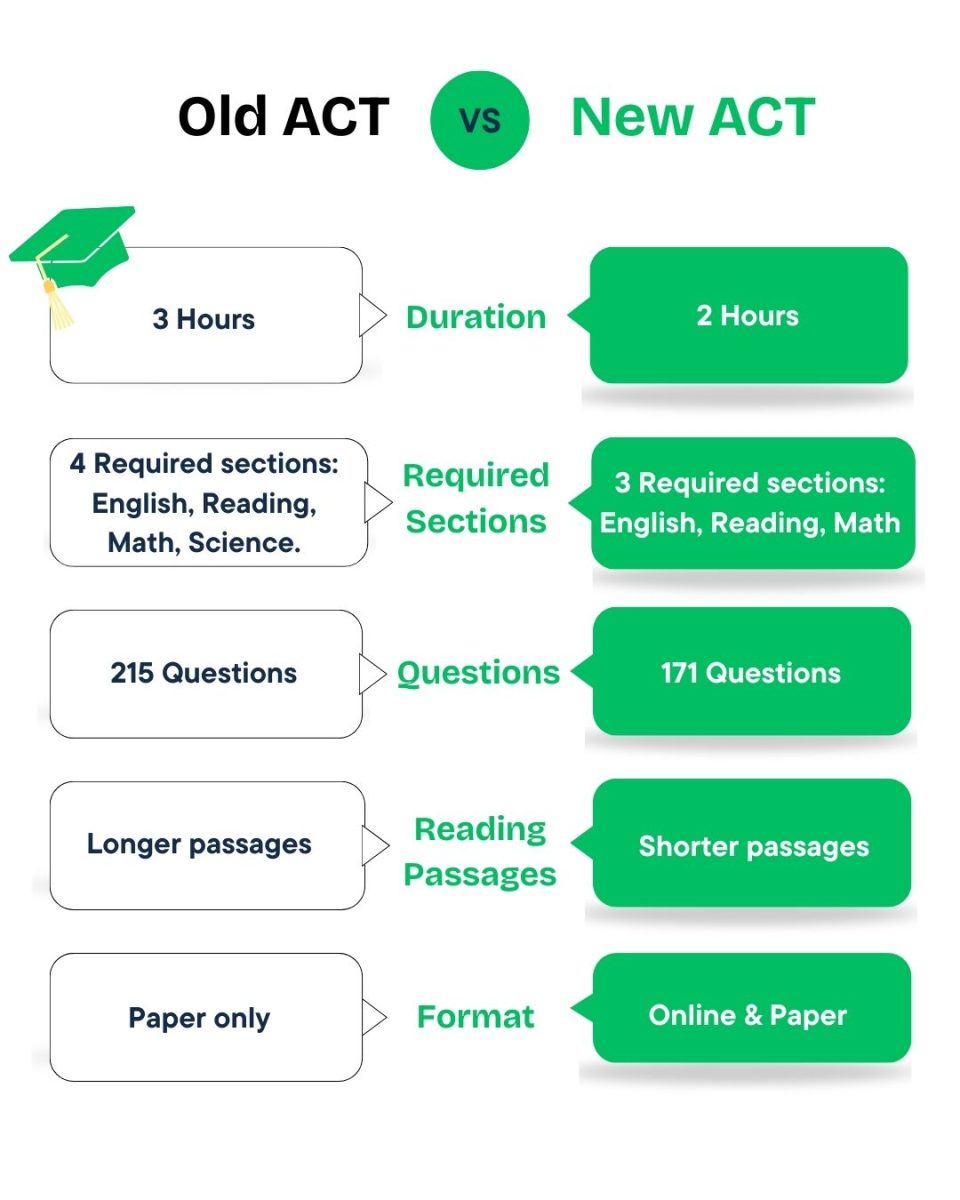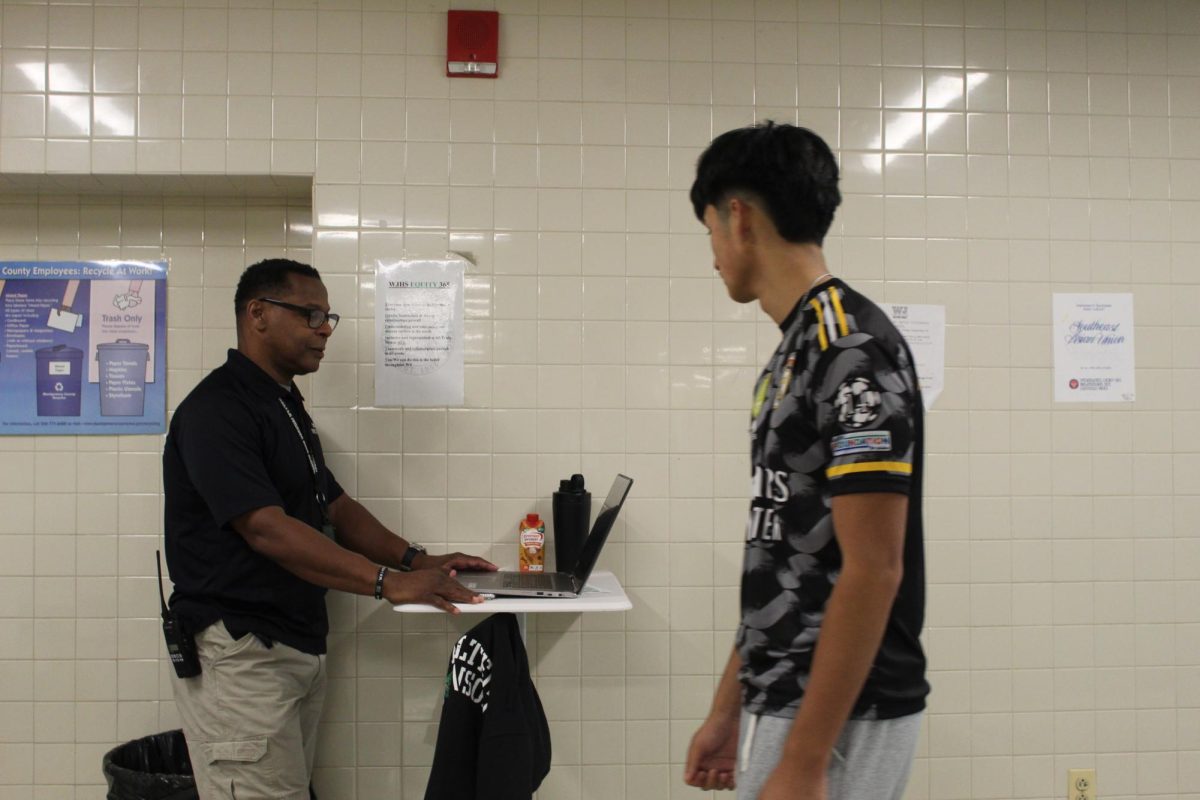When taking classes at a diverse school such as WJ, it is a rarity for a student to be one of the only ones with their background in a class. However, there does seem to be an exception to this in many of the upper-level STEM classes as all but two have a distribution of greater than three boys to one girl or three girls to one boy.
Historically, most STEM (Science, Technology, Engineering and Mathematics) fields have been dominated by men, although the gap has become significantly smaller. According to a 2023 report from the U.S. National Science Foundation, about 50% of bachelor’s degrees earned in science and engineering were earned by women. In the workforce, however, women make up just over one-third of STEM jobs and are still often being paid less than their male counterparts.
“Lots of people have been trying to correct that skew over many, many years … I think it’s a number of factors that contribute to it. For example, historically, those classes are seen as more like nerdy classes or more male-dominant fields, so people who identify as female or non-binary might not feel as comfortable taking them. Another part might be a systemic idea that people of a particular gender might not be as good [in] those fields, which I would say is definitely not true based on statistics. Typically girls and non-binary people tend to do really well in my class,” AP Computer Science Java teacher Fedor Menchukov said.
At the same time, 76% of the healthcare workforce are women according to the US Census Bureau. This statistic is very much in line with the enrollment numbers for AP Biology at WJ, one of the most essential sciences to know for healthcare jobs.
Senior Mackenzie Raue has taken many of the upper-level STEM courses that WJ offers and she plans to study Applied Mathematics at Washington University in St. Louis next fall.
“I’ve definitely learned to work with guys in those classes and I think that I had to earn the respect from them in a few of those classes and I think now I do have that respect, but I would say that in the beginning, it was harder to be trusted when working on group projects and [other] stuff. But I would say that for the most part, it hasn’t affected me too much,” Raue said.
Many of the upper-level STEM classes have multiple prerequisite or corequisite classes. While the science department has gotten rid of many requirements for AP physics classes, there are still prerequisites for AP Chemistry, AP Biology, AP Computer Science Java and all upper-level math courses.
“Another issue might be what students have taken in the past, so if you don’t have a background where you’ve took a lot of tech classes prior to high school because maybe you weren’t steered towards them in a younger grade, then you might not feel as ready to take those classes, even though you could do really well in them regardless,” Menchukov said.
Of all of the STEM classes, based on this year’s enrollment, AP Chemistry is consistently the closest to a 50/50 gender distribution split. AP Chemistry teacher Stephanie Deonarain along with the Honors Chemistry teachers have promoted the AP class to many students who they believe can succeed at the next level.
“Any kids that we see that can do the work, they get supported and they get recommended. Just one teacher saying, ‘how about you try AP?’ [A student] might not have thought that [they] can even do the class because if you have students who aren’t represented in the class already, then they’re like, ‘well, I don’t see anyone who looks like me.’ But once again, you start, you get a few people to buy in and then more and more [students] take it,” Deonarain said.
Even with large gaps in the gender proportions of students taking upper-level STEM classes, many believe that the shared experience in the struggle of the classes builds a community where everyone is valued.
“There’s definitely more guys than girls although the girls that are in [those classes] are really into STEM and I’ll see them throughout many STEM classes. I know [junior] Nina [Rouis] for example, is in BC, she’s in a tech class [and] she’s also in physics … There’s not really a separation of genders. Everyone talks to each other and it’s still communal,” junior Guillaume Fradet said.
Part of the issue may be that gender stereotypes about STEM classes while not promoted by the school are often promoted in society as a whole.
“I feel like they’re probably discouraged not only because it’s a lot of math, but also that it’s not seen as a typical girl thing to take STEM classes,” Rouis said.
While the distribution from this year is certainly skewed, it does show improvement from previous years.
“I remember when AP Physics C was all boys and might have one girl in the class and now it’s shifted. If you look at the numbers now without knowing where we started, then there still is a divide, but if you look at where we started not that long ago, it’s amazing how that has shifted in just a few years,” Deonarain said.
Lily Tapparo contributed reporting.









